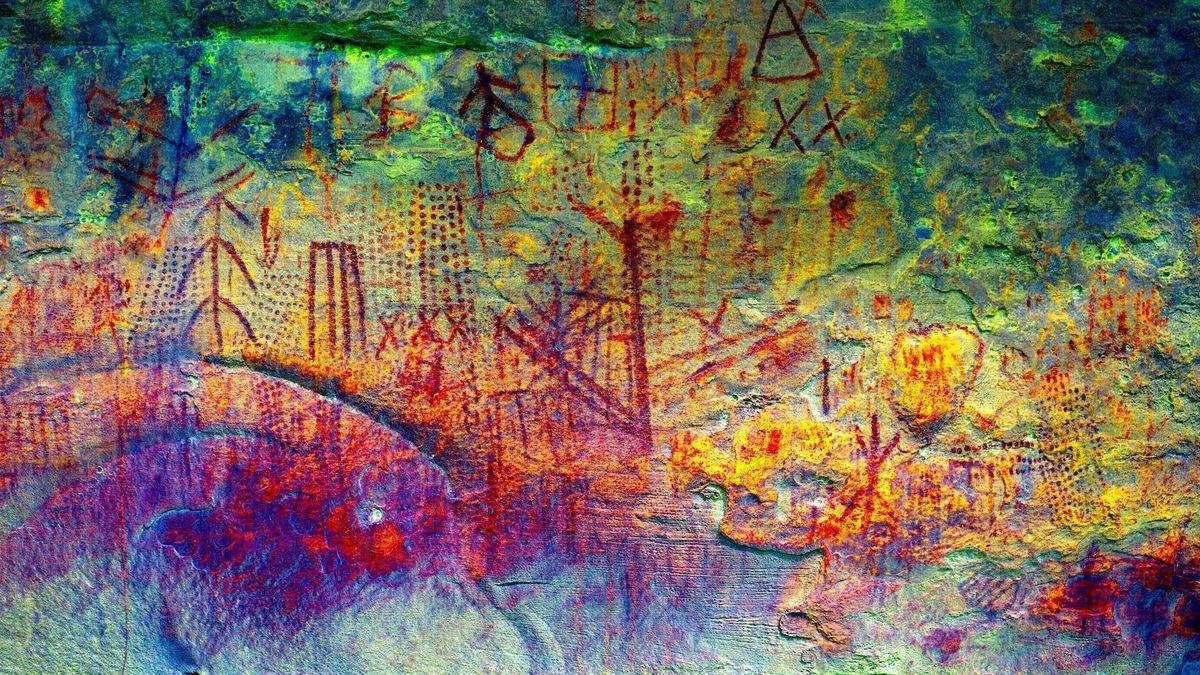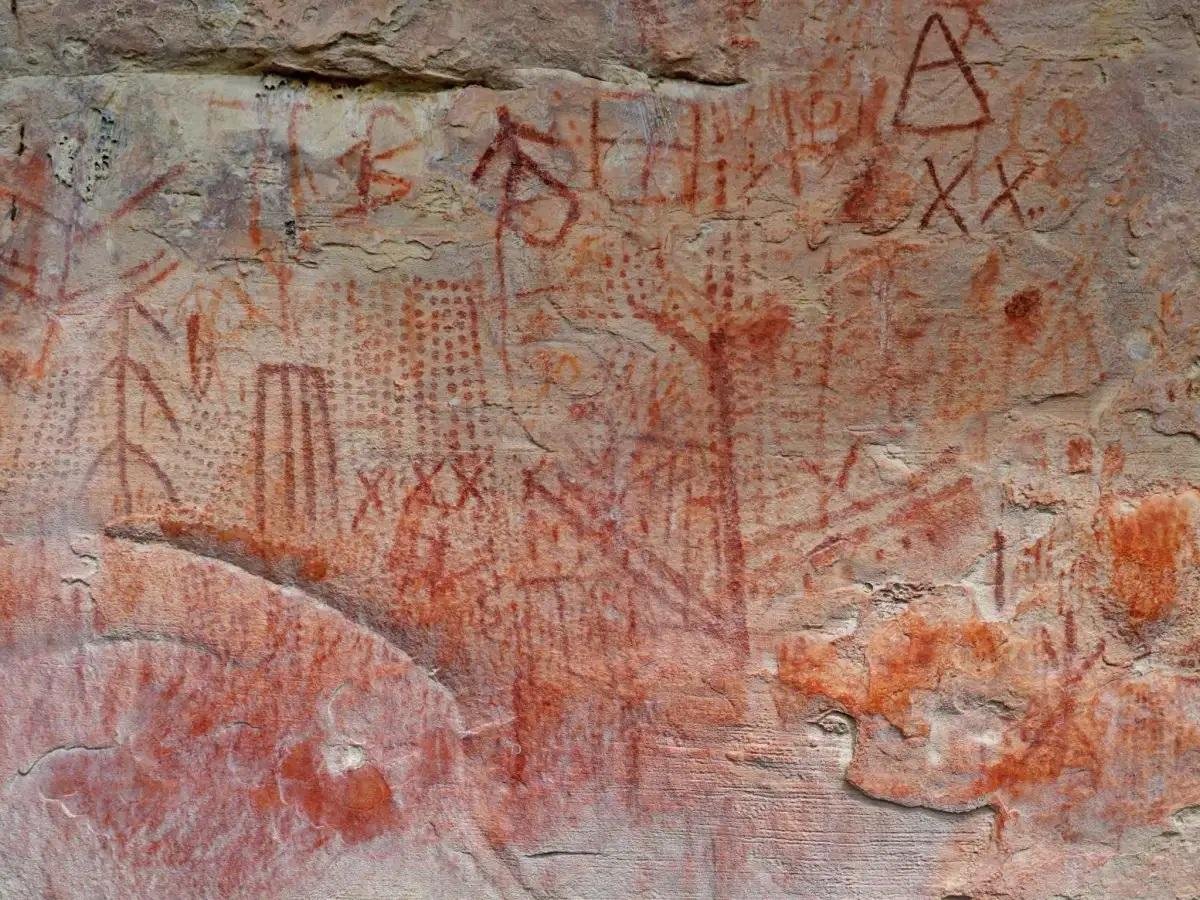An archaeological team in Venezuela has discovered 20 rock art sites in Canaima National Park, located in the southeastern part of the country. These sites, dating back thousands of years, may reveal the presence of a previously unknown culture.
 An enhanced view showing some of the rock art discovered in Venezuela. Credit: José Miguel Pérez-Gómez
An enhanced view showing some of the rock art discovered in Venezuela. Credit: José Miguel Pérez-Gómez
The team, led by José Miguel Pérez-Gómez, an archaeologist and researcher at Simón Bolívar University in Caracas, has uncovered pictograms and petroglyphs that depict a variety of geometric and figurative motifs.
The newfound rock art, referred to as pictograms, were painted in red and feature geometric shapes such as dotted lines, rows of X’s, star-shaped patterns, and interconnected straight lines. Additionally, there are simple depictions of leaves and stick figure drawings of people. Some images, known as petroglyphs, were incised into the rock and exhibit similar geometric designs. These artworks bear resemblance to other rock art found in parts of South America, including Brazil, Colombia, and Guyana, yet they indicate the emergence of a distinct cultural group previously unrecognized.
Pérez-Gómez, in an email interview with Live Science, noted that the rock art sites “represent a new culture previously unknown.” He suggested that these signs likely held ritualistic meanings, possibly related to events such as birth, disease, the renewal of nature, or hunting successes. “It is almost impossible to get into the minds of people living so many [thousands of] years ago,” he said, “but definitely these signs had a ritual meaning.”
 Rock art from Upuigma-tepui rock shelter in Canaima National Park, Venezuela. Credit: José Miguel Pérez-Gómez/Simón Bolívar University
Rock art from Upuigma-tepui rock shelter in Canaima National Park, Venezuela. Credit: José Miguel Pérez-Gómez/Simón Bolívar University
The exact age of the rock art remains uncertain, though similar art in Brazil has been dated to around 4,000 years ago. Pérez-Gómez speculates that the Venezuelan examples might be even older. Canaima National Park, a vast area roughly the size of Belgium, is known for its forests, mountainous terrain, and the world’s tallest waterfall, Angel Falls. Pérez-Gómez theorizes that this park could have been the initial development site for this enigmatic culture, which later spread to other regions such as the Amazon River basin, the Guianas, and southern Colombia.
Pottery fragments and stone tools were also discovered at these sites, suggesting they may have been used by the creators of the rock art. However, further research is necessary to confirm this hypothesis. Pérez-Gómez remains optimistic that more rock art sites will be uncovered as exploration continues in the park, which spans a larger area than some European countries.
The findings were first presented internationally at the UNESCO-backed “New Worlds, New Ideas” conference held in Valcamonica, Italy, from June 26 to 29. The significance of these discoveries extends beyond Venezuela, offering insights into the cultural and ethnic richness of early South American settlers. “This is relevant not only for Venezuela but points at a cultural and ethnic richness that will enhance, worldwide, how we think about the region,” Pérez-Gómez told Axios Latino.
Despite the challenging economic situation in Venezuela, which has led to a significant brain drain and scarce resources for academic work, researchers like Pérez-Gómez continue their efforts to fill the gaps left by professionals who have emigrated. He is in contact with researchers from neighboring countries to collaborate on further studies and determine if these sites share a common origin or belong to different cultural groups.
The next steps for Pérez-Gómez and his team involve more in-depth excavations and analyses at the rock art sites. They hope to eventually secure heritage site status for the area to ensure its preservation.





